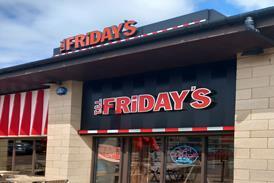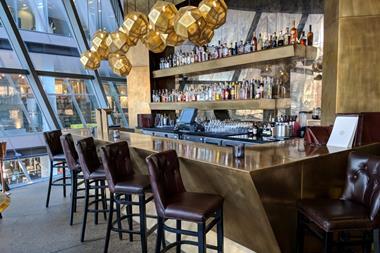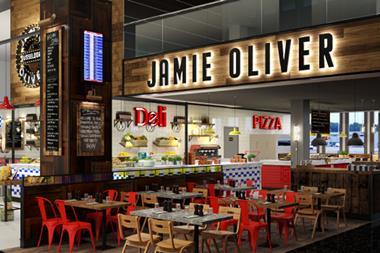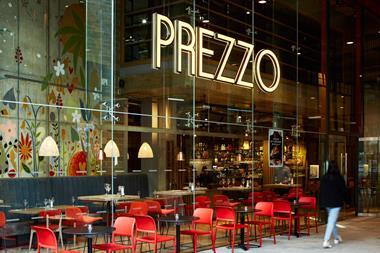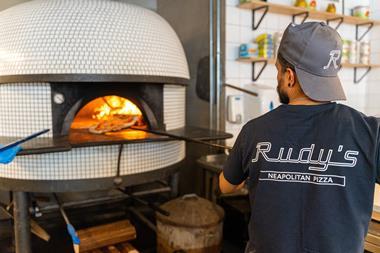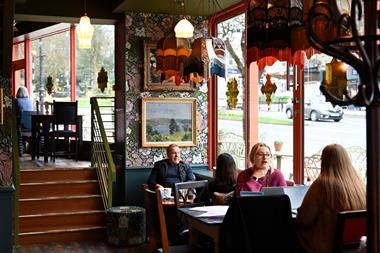The news that Jamie Oliver Restaurant Group was calling in administrators may not have been unexpected but the dramatic exit of a casual dining pioneer from the UK high street was unsettling for the entire industry. MCA editor James Wallin looks at what went wrong and whether this represents a second wave in the CVA saga that has dominated the past year.
The brutal collapse of the Jamie’s Italian estate in the UK is, first and foremost, a thoroughly depressing story.
The spate of CVAs and restructures across the major casual dining players over the past few years have all come with the promise of a phoenix from the flames, with hard decisions also leading to new opportunities. Much of this was spin but at least there was hope.
In yesterday’s bleak assessment of the state of play at the Jamie Oliver Restaurant Group there was little room for positivity. Oliver himself described the decision as simply “devastating”.
He will have been braced for the outpouring of opinion, informed or otherwise, into his failings as a restaurateur. Much of this, particularly on social media, was prefaced with a “I take no pleasure in seeing hard-working people lose their jobs” – a statement of such banality and blinding obviousness that only a sociopath would really need to declare it. The detractors then inevitably cite Oliver’s vast personal fortune, with the seeming implication that he should continue to prop up an unsustainable business until all his money runs out.
There have clearly been failings, which I will go on to explore, and Oliver could have handled the earlier administration of Barbecoa better. However, as Luke Johnson, another sector giant previously caught in a storm of schadenfreude, pointed out – to put 1,000 jobs at risk you first have to create them. Oliver has played an important part in growing the UK casual dining sector and an even more crucial role in whipping up excitement about food in the British public. That should be respected.
The coverage has also taken the easy route of taking Jamie’s Italian as symptomatic of the wider casual dining market. There are certainly common themes but it’s important to keep this in context – we are talking about 25 restaurants with an unusually high profile. Jamie’s was, at the end, a tiny fragment of a diverse industry with equally complex challenges.
All of that said, clearly mistakes, or at least mis-steps, were taken along the ultimately doomed road to recovery at Jamie’s. It is important to analyse what lessons can be learnt.
Putting Jamie back into Jamie’s
As has been written many times before, the kudos of being connected to a high-profile public figure comes with huge benefits and many pitfalls. Oliver is one of the few celebrity chefs who dominated the screens in the late 90s/early 2000s to have maintained his box office appeal. That has presented his restaurants with an enviable marketing opportunity. However, his zealous public campaigning has also made him a marmite figure to many – hence much of the tone of coverage of his current woes.
In trying to reinvigorate the Jamie’s brand, the management team – led by Jon Knight – adopted the classic tactic of going back to roots and trying to re-connect Jamie’s with Jamie. Last year, the formerly Naked Chef fronted his first TV series on Italian cuisine since his restaurant empire was built. There was a strong focus on cross-promotion, with dishes featured on the show highlighted as specials of the week.
There was absolutely nothing wrong with this approach but ultimately it seems to have been too little too late. The six-week run of the series, even with the longer-term stimulus of the associated book, couldn’t halt the wider sense of a chain out of touch with the modern consumer.
Should bolder moves have been taken to fit the restaurant profile around Oliver’s wider career? Persevering with an Italian offer in the most crowded part of a crowded market was a tough ask. Should the slate have been wiped cleaner and a wider Jamie’s Kitchen model been rolled out across the estate – signifying both a real change in direction and allowing the flexibility to fit in more easily with Oliver’s media work?
I have no doubt that the team at Jamie’s put a huge amount of effort into refreshing the menu and boosting service standards but how much of a genuine change was achieved? Names of dishes were tweaked and the fresh cooking element highlighted but at a glance there was no drastic shift. Knight talked about a move to everyday low prices but in the wider context of the casual dining market it wasn’t cheap. Its pizza prices, for instance, could never compete with upstarts like Franco Manca.
Cuts needed to go deeper
There is a question as to whether Oliver should have been more brutal with the changes he made at the top. He has received criticism in the past for putting his brother-in-law, with no experience in his hospitality, at the head of his company. Knight, brought in after Oliver long-time lieutenant, Simon Blagden, was dispatched, has worked tirelessly to resurrect the UK estate. But ultimately his real skills lay in international franchising and it is notable that he has always been more comfortable talking about the opportunities abroad and in travel hubs than on the UK high street. In hindsight (and yes, from the safety of my armchair) should Knight have been left to continue the good work he was doing in the international business and a seasoned restaurant operator brought in to tackle the domestic arm?
If that had happened perhaps the need for deeper cuts during the CVA process would have been identified. There is a sense that the business, and Oliver in particular, wanted to limit the damage done by the process and ultimately that has left more than just a core estate to deal with. It did not help that the CVA opened up the opportunity for landlords to take back the leases on some of the better performing sites.
Rents have clearly played a huge part in the downfall of Jamie’s Italian with some eye-watering fees apparently agreed during the boom years for some pretty ordinary locations. Hopefully landlords will take heed of this latest indication that across the board their expectations are often unrealistic.
The next steps
While I remain wary of using Jamie’s as a bellweather for the wider sector, it does inevitably raise questions as to whether we are seeing the start of the second stage of the CVA process that dominated last year. Asked who are the likely candidates for a CVA in 2019, one industry source said: “The same ones as last year probably”. If Jamie’s failed to cut deep enough to leave a sustainable business what does that mean for the likes of Prezzo, Byron and GBK, among others?
Meanwhile, there will be plenty of interest in snapping up some of the better locations in the Jamie’s portfolio by a new breed of restaurant operators who have emerged during the casual dining explosion and all too aware of how fickle the customer is. Hopefully those unfortunate to lose their jobs this week will also be quickly recruited by operators struggling to fill positions. That would at least be one positive to come from this sorry saga.
Precis
Jamie’s suffered a death by too few cuts
The news that Jamie Oliver Restaurant Group was calling in administrators may not have been unexpected but the dramatic exit of a casual dining pioneer from the UK high street was unsettling for the entire industry. MCA editor James Wallin looks at what went wrong and whether this represents a second wave in the CVA saga that has dominated the past year.



